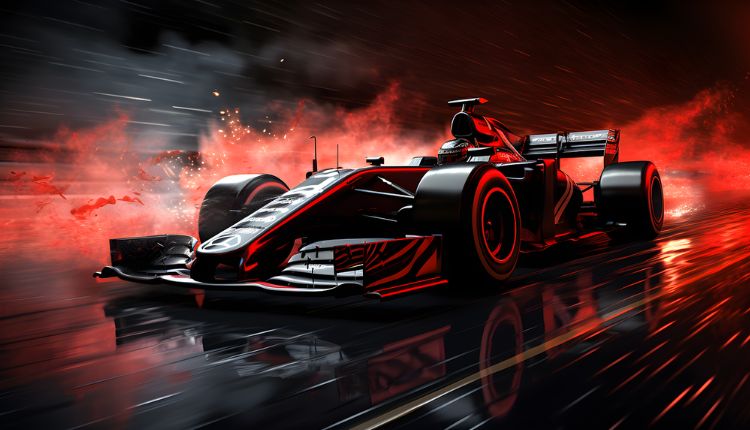From hybrid power units to advanced steering systems, Formula 1 is a hotbed of game-changing innovation. Many innovations devised over the sport’s 70-plus year history have been hampered by legal or technical limitations, and others were never taken to production. But the ingenuity of engineers has led to some enduring technologies – from F-ducts to winglets, and the imposing ‘halo’ that protects drivers’ heads at high speeds.
Chassis
A cocoon-like structure that houses the driver and must be strong enough to protect him or her in a serious accident. It is made of carbon fibre and reinforced compounds, including Kevlar.
Formula 1 cars must be constructed of a range of ultra-lightweight materials in order to meet strict FIA rules on car weight and so enable them to reach the minimum permitted race-day weight limit of 740 kg without fuel. These materials are often combined to provide greater efficiency and performance. Using CFD (Computational Fluid Dynamics) software, engineers create mathematical models to optimise airflow over and around an F1 car’s bodywork. This can improve downforce and reduce drag.
Engines
A car’s engines are at the heart of Formula 1 Technology breakneck technological advances. Precision engineering, boundary-breaking technology and a relentless pursuit of performance have always been at the core of F1’s technical ethos. Currently, Formula 1 cars have the most advanced engine technology in the world. They use 1.6 litre, four-stroke, turbocharged V6 hybrid power units. These combine a petrol internal combustion engine with electric motors powered by an Energy Recovery System (ERS), using energy captured under braking to increase efficiency.
To avoid cheating, each ERS is fitted with electrical DC sensors and the engine with a certified torque sensor and fuel flow meters. These are monitored by the FIA. The 2023 regulations have been designed to promote high levels of sustainability and cost control.
Tyres
A Formula 1 car’s tyres are one of the few things that make direct contact with the road (aside from the driver’s helmet). They also play a crucial role in deciding the pace and strategy for each race. Each team is given a total of 16 tires for each race weekend. That’s a lot of rubber – enough to fill half a dozen shipping containers. Each pair of tires comes in two different compounds: a hard tyre that’s more durable but offers less grip, and a soft tyre that’s grippy but degrades faster. Teams select which set of tyres to use by considering weather conditions and track characteristics, as well as how much degradation they can tolerate. They then pit in order to swap the tires during the race.
Brakes
Braking is a key element in any F1 vehicle, and is generally considered to be much more advanced than road-car systems. All F1 cars use carbon fibre composite discs gripped by special brake pads. The discs are precision machined and mount to an axle via a disc bell – which transfers the torque from the wheel to the chassis through splines. F1 drivers can use the braking system to control the weight transfer they experience when stopping their car – the same way that they can shift their throttle bias in a corner to change the power delivery to the front or rear of the car. This is an example of the ‘brake-by-wire’ technology which has been used in F1 for years.
The master cylinders are complex devices – they still use a piston to compress fluid, but there is now a second stage which maintains pressure for the duration of the braking event. The master cylinders communicate with the calipers via an electrical wire.
Electronics
There’s a lot of data generated by a Formula 1 car, with each vehicle collecting around 1.5Gbyte per race. This is gathered through sensors and telemetry systems that are constantly transmitted to the teams’ computers, helping them fine-tune the drivers’ vehicles down to the millisecond. The technology behind a modern F1 car is astounding. Even a small sensor in the car has a major impact on the way the engine, transmission, and other components perform.
One such example is the Kinetic Energy Recovery System (KERS), which was introduced in 2009 to capture braking energy to give drivers a temporary boost of power for 6.7 seconds each lap. This is now a standard feature in F1 cars, but it’s just one example of how the sport continues to push the boundaries of innovation.
Conclusion
F1 engineers create software that optimizes car performance while ensuring driver safety. They also craft aerodynamics that strike an intricate balance between reducing drag in the straights and creating downforce in corners. Despite restrictions on wind tunnel usage and teraflops for simulation, the sport remains a testing ground for cutting-edge automotive technology
